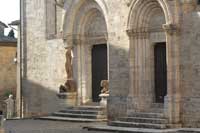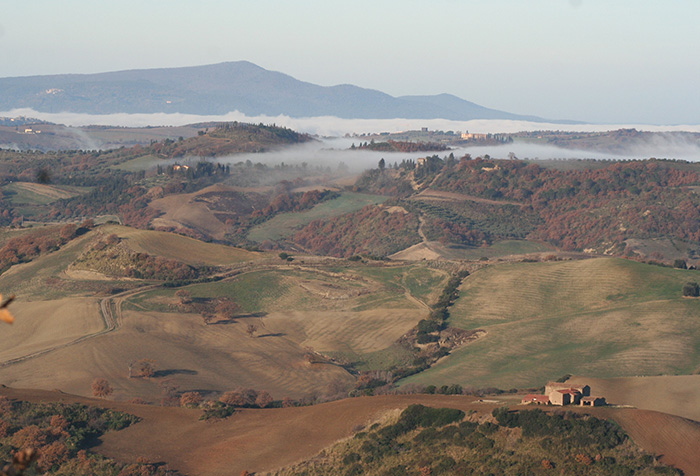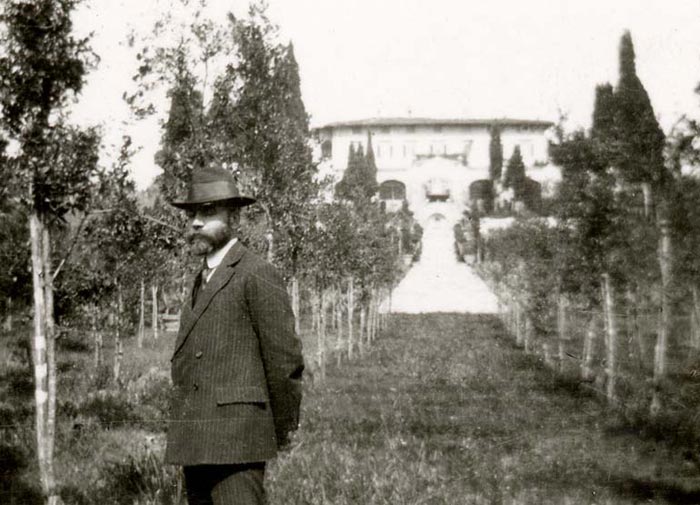 |
Bernard Berenson in the garden at Villa i Tatti, March 1911 |
Bernard Berenson |
Bernard Berenson (June 26, 1865 – October 6, 1959) was an American art historian specializing in the Renaissance. He was a major figure in pioneering art attribution and therefore establishing the market for paintings by the "Old Masters". Berenson died at age 94 in Settignano, Italy. As Renaissance scholarship has evolved, a number of Berenson's attributions are now believed to be incorrect. There is also ongoing speculation as to whether some of these misattributions were deliberate, since Berenson often had a considerable financial stake in the matter. Due to the strong subjective element in connoisseurship, such accusations remain hard to either disprove or substantiate. |
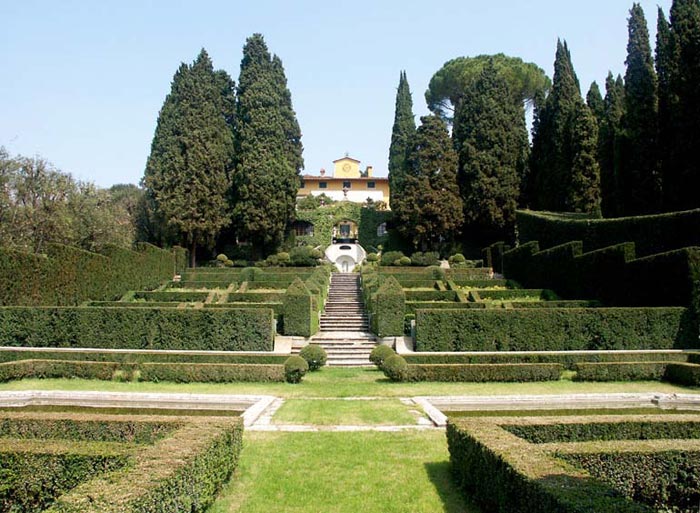 |
Villa i Tatti in Settignano, The Villa seen from the bottom of the Italian Garden |
Works * Venetian Painters of the Renaissance (1894) |
Gardens in Tuscany | Villa i Tatti in Settignano |
|||||||||||||||||||||||||||||||||||||
| [1]Bernard Berenson and his wife Mary bought Villa I Tatti in 1905. In 1909 they commissioned the English architect Cecil Ross Pinsent (1884–1963) to supervise a series of extensions and alterations to Villa I Tatti, as well as to design a garden and supervise its planting and construction with the help of the English writer-scholar Geoffrey Scott (1884 – 1929). The surviving documentation suggests that, while Pinsent was certainly the maitre d’oeuvre for this job, he had to contend with patrons who had some very clear ideas about what they wanted their garden to look like. Both Mary Berenson and Bernard did not fail to ask their architect for some very substantial modifications to his original project, which intervention was all the more understandable as this was Pinsent’s first major commission. These modifications were often motivated, quite simply, by a wish to curtail expenses (as happened with the proposal for an elaborate staircase from the limonaia to the Italian garden), but in other cases they were motivated by more stylistic considerations. Work on the garden of Villa I Tatti began in 1909 with the construction of a little house at the bottom of the property to house the head gardener, and a large cistern sunk into the ground at the very top of the garden to provide a more adequate water supply for the planned plantings. This cistern, fed by spring water that still ensures the water necessary for the garden, was above all destined to keep the Berensons’ "English lawns" flourishing in a climate that was hardly favourable to such a luxury. The next two years saw much activity in the garden and, by March 1911, Cecil Pinsent enthusiastically wrote to Mary Berenson: "The garden is going merrily and really is going to look well. All the muratore work (masonry) is about half done – laghetti (ponds), steps, paving + the plastering of the rustic wall. We are getting quite excited about it." In the Spring and Summer of 1912 the intricate pebble mosaics (still much admired) were completed on the landings of the staircase of the Italian garden and in various other parts of the garden. The following year saw slow but steady progress, including the planting of hedges to delimit the central walk in the new cypress allée and the installation of a monumental stone bench around the lowest level of the Italian garden. Work in the garden continued well into 1914, although it was to come to a halt in late August due to the beginning of the First World War. Fears of a conflict that would involve all of the peninsula, combined with apprehensions with respect to possible difficulties in transferring funds, stopped most of the building activity at that point in time. When work was resumed some years later the garden was finally brought to completion, with only some small modifications that did not significantly alter the construction and plantings that had been accomplished before the war. Villa I Tatti, a Medici residence situated between Fiesole and Settignano in the north of Florence has been the headquarters of the Center for Italian Renaissance Studies at Harvard University since 1961. Villa I Tatti | The Harvard University Center for Italian Renaissance Studies | www.itatti.it
|
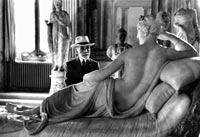 Bernard Berenson, age 90, at the Borghese Gardens in Rome |
||||||||||||||||||||||||||||||||||||
This page uses material from the Wikipedia article Bernard Berenson, published under the GNU Free Documentation License.
|
|||||||||||||||||||||||||||||||||||||
|
|||||||||||||||||||||||||||||||||||||



